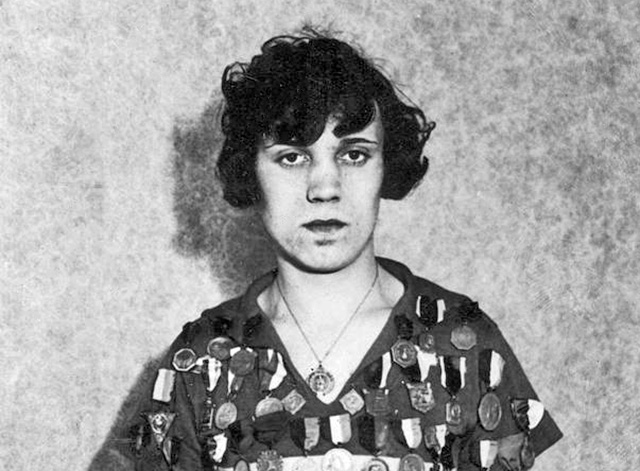There was controversy at the Paris 2024 Olympic games concerning the gender of two boxers. This is not the first time that this issue has been raised at the Olympic Games, and there are many examples of transgender athletes participating in previous Olympic Games.
 Polish athlete Stanisława Walasiewicz (also known as Stella Walsh)
Polish athlete Stanisława Walasiewicz (also known as Stella Walsh)History of Transgender Athletes at the Olympic Games
Although not specifically transgender, in the history of the Olympic Games there are a few examples of competitors in female events later being discovered to be genetically male, though in most cases it was not purposeful deception. Most of these cases of men competing as females have been unintentional and more a case of undiagnosed genetic abnormalities.
One instance is from the 1936 Berlin Olympics, German Dora Ratjen who finished fourth in the women's high jump was later found to be a man. Some have claimed that the Nazis ordered him to pose as a woman. Another famous case is of Polish athlete Stanisława Walasiewicz (also known as Stella Walsh), who won gold in the women's 100 m at the 1932 Summer Olympics in LA, and silver in the 100 m at the 1936 Olympics. After she was shot dead during an armed robbery in 1980, the subsequent autopsy revealed she possessed male body parts, although she also had female characteristics. More recently, middle-distance runner Caster Semenya from South Africa was discovered to be an intersex woman, assigned female at birth. She has XY chromosomes and naturally elevated testosterone levels.
Tokyo 2021
The participation of New Zealand's trans-athlete Laurel Hubbard in the weightlifting competition in Tokyo 2020 was controversial, with not everyone in agreeance with allowing an athlete who was born male to compete in the female event, particularly in a strength-based sport. Hubbard was touted as the first openly transgender athlete to compete in the Olympic Games, though there were a couple of other athletes who identified as transgender who also competed in Tokyo.
Latest Regulations
In general, there are no conditions placed upon those who transition from female to male gender, making them free to compete.
For the 2016 Olympics, trans-athletes aiming to compete in female events were required to demonstrate testosterone levels below a certain level (and are not required to undergo reassignment surgery as per previous guidelines). These regulations have changed over the years. In 2024 the IOC released guidelines about dealing with tarns athletes, though it comes down to each sport to set the criteria for what makes an athlete female.
Currently, many sports, such as the major Olympic sports of track and field, weightlifting, swimming and cycling, have rules that bar transgender women who went through puberty as males, though their definition of the stage of puberty varies.
It is a challenge for sports to balance inclusivity with fairness. This is an ongoing controversy and the guidelines are expected to continue to change.
Transgender Athletes
Here are details of just some of the transgender/non-binary athletes to have competed in the Olympic Games.
Quinn (2021)
Non-binary Canadian football player Quinn was one of the first openly transgender athletes in the Olympics and the first to win a medal, a gold medal for Canada in women's football. They also won bronze with Team Canada in Rio de Janeiro in 2016, but at the time they hadn't yet come out.
Laurel Hubbard (2021)
Laurel Hubbard, a trans woman, competed in the 2020 Summer Olympics in weightlifting. She became the first openly trans woman to compete at the Olympics; she did not complete her lifts and won no medal.
Alana Smith (2021)
Alana Smith, a non-binary skateboarder, represented the United States in the women's skateboarding semifinals of the 2021 Olympic Games.
Nikki Hiltz (2024)
Transgender and nonbinary middle-distance runner Nikki Hiltz will compete for the USA in the women's 1500m in Paris.
Related Pages
- Gender Testing at the Olympics.
- Transgender Paralympic Participants
- Women at the Olympic Games
- Female Firsts in Sport


 Current Events
Current Events